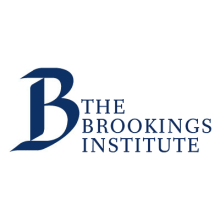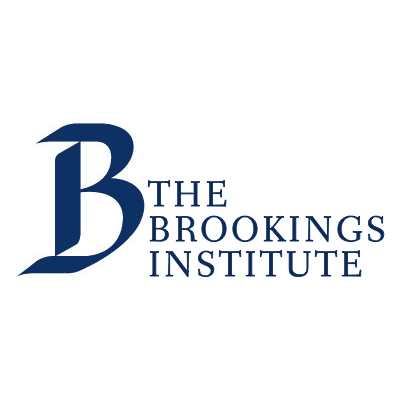
We are currently facing some of the biggest crises of our time—climate change, learning loss, global health inequities, and more—and we need new approaches if we are to make meaningful progress toward tackling them. While there is no doubt that government plays an important role in helping to solve these critical issues and support social service programs to combat them, it has long been recognized that the private, or nonstate, sector has the potential to bring a multitude of benefits in either the delivery or financing of those services through public-private partnerships (PPPs). We see great potential for a new type of PPP—partnerships for public purpose* (new PPPs)—which emphasizes not whether the partner is from the public or private sector, but whether these collaborations and their impact have a publicly oriented purpose.
Reimagining public-private partnerships
PPPs have existed since at least the Roman Empire—in the form of concessions —for the construction of public baths and roads and the management of public markets. In fact, when most people think of PPPs, this Roman model is often what they picture—an antiquated model of government infrastructure outsourcing that pits public interest against private financial interest, rather than fostering collaboration, as the term partnership would imply. Furthermore, in this old model, the “private” sector implies for-profit industries, and thus nonprofit, third-sector, social-enterprise, and other stakeholders are often excluded. PPPs must evolve beyond this traditional definition in order to meet this moment.
Partnerships for public purpose, on the other hand, put the emphasis on multilateral relationships that support sustainable, long-term, and systemic impact. Instead of being constrained by private finance contracts or by cost-reduction strategies, these new PPPs encourage true partnerships with a diversity of stakeholders. By harnessing the technical expertise, approaches, and networks possessed by governments, private-sector organizations, nongovernmental actors, and donor agencies, these new PPPs can provide innovative mechanisms and promote collaboration to address challenges that traditional government resources and competing priorities struggle to negotiate. In doing so, they can increase capacity, improve quality, enhance equity, and target poor or marginalized populations for the delivery or financing of services.
An increasing number of these new PPPs are being put into practice and delivering results for citizens around the world. Over the past decade, outcome-based financing mechanisms such as social, development, and environmental impact bonds (SIBs, DIBs, and EIBs), as well as outcomes funds, have arisen as key forms of these new PPPs. These mechanisms bring together multiple stakeholders, which could include governments, NGOs, social enterprises, donors, and investors, to collaborate and deliver a set of outcomes—paying only when results are achieved. In an impact bond, investors (often impact investors) provide risk funding for social services programs, and this investment is repaid—oftentimes with a return—based on the program’s achievement of predetermined social and/or environmental outcomes. Outcomes funds pool funding to pay for outcomes in a particular issue or geographic area, potentially for distribution across many impact bonds. For more on how these mechanisms work, see “Impact bonds in developing countries: Early learnings from the field.”
What makes impact bonds and outcomes funds partnerships for public purpose?
Impact bonds and outcomes funds foster deep partnerships through various mechanisms inherent to the model. First of all, they bring together a multitude of actors that often don’t sit together at the table and—since they require the expertise and contributions of all stakeholders involved—each is dependent on the others for the initiative to function. Furthermore, while these mechanisms often face criticism for being costly and labor intensive to design, the time and resources dedicated upfront and throughout impact bond and outcome funds projects creates both collective accountability and ownership of the results. Finally, the model has the potential to create true partnerships with the beneficiaries themselves, who best understand their own needs, by including them in the design of the initiatives.
These models are also designed with public purpose at the fore, since the focus is on successful achievement of outcomes, such as improved learning levels or gainful and sustained employment. Moreover, since impact bonds and outcomes funds allow for the tailoring of services to disadvantaged populations, they can provide more comprehensive support across multiple sectors or issue areas, which can benefit all of society. In addition, these models ensure that public spending is effective: Tax dollars are not wasted on social services that don’t work, and they can reduce costly remedial services and increase benefits further down the road.
Impact bonds, outcomes funds, and other partnerships for public purpose (new PPPs) have the potential to support COVID-19 recovery while strengthening social service delivery and, in essence, changing its DNA.
Impact bonds have already demonstrated their potential to help address a range of social issues in high-, middle-, and low-income countries, with over 200 implemented across 35 countries, including 19 in developing countries. Some examples of impact bonds achieving public good include a program to improve learning outcomes of over 200,000 disadvantaged children across four states in India, an initiative aimed at improving livelihoods by supporting first-time entrepreneurs in Kenya and Uganda, and a program in Israel focused on the prevention of Type 2 diabetes. Another impact bond, the Impact Bond Innovation Fund, brought together a multitude of actors including a local government agency, several philanthropic entities, a university, and both a local and an international NGO to support an early childhood development program for marginalized children in the Western Cape in South Africa.
Several outcomes funds have also been established, and additional ones are being designed. One example is the Education Outcomes Fund (EOF), an effort to significantly improve learning and employment outcomes by tying funding to measurable results. EOF partners with governments, donors, implementing partners, and investors to achieve concrete targets for learning, skill development, and employment. With initial projects in Ghana and Sierra Leone, this approach is being scaled up with the aim of transforming the lives of 10 million children and youth around the world. EOF has recently joined the United Nations as a hosted partnership—showing the growing institutionalization of this model.
Conclusion: Where do we go from here?
While the past decade has seen significant growth in new ways for private, public, and third-sector actors to work together in partnership, thus far many of these initiatives have been on a small scale. What will it take to expand this model? Seeding and institutionalizing an outcomes-focused mindset at all levels of government, among international agencies, and within nonprofit service providers is the first step. This will require risk-taking, the willingness to rethink traditional models, and the agility to go big. It will also necessitate capacity building of all stakeholders to engage in this new way of working. Models like EOF and other outcomes funds are laying the path for large-scale partnerships that place beneficiaries at the forefront. Now more than ever, as the world is building back after the COVID-19 crisis, we will need strong partnerships that support public purpose in a cost-effective and impactful way. Impact bonds, outcomes funds, and other partnerships for public purpose (new PPPs) have the potential to support this recovery while strengthening social service delivery and, in essence, changing its DNA.
*Note: The authors borrowed the term “partnerships for public purpose” from K. Srinath Reddy in “The Convergence of Infectious Diseases and Noncommunicable Diseases: Proceedings of a Workshop (2019).”


